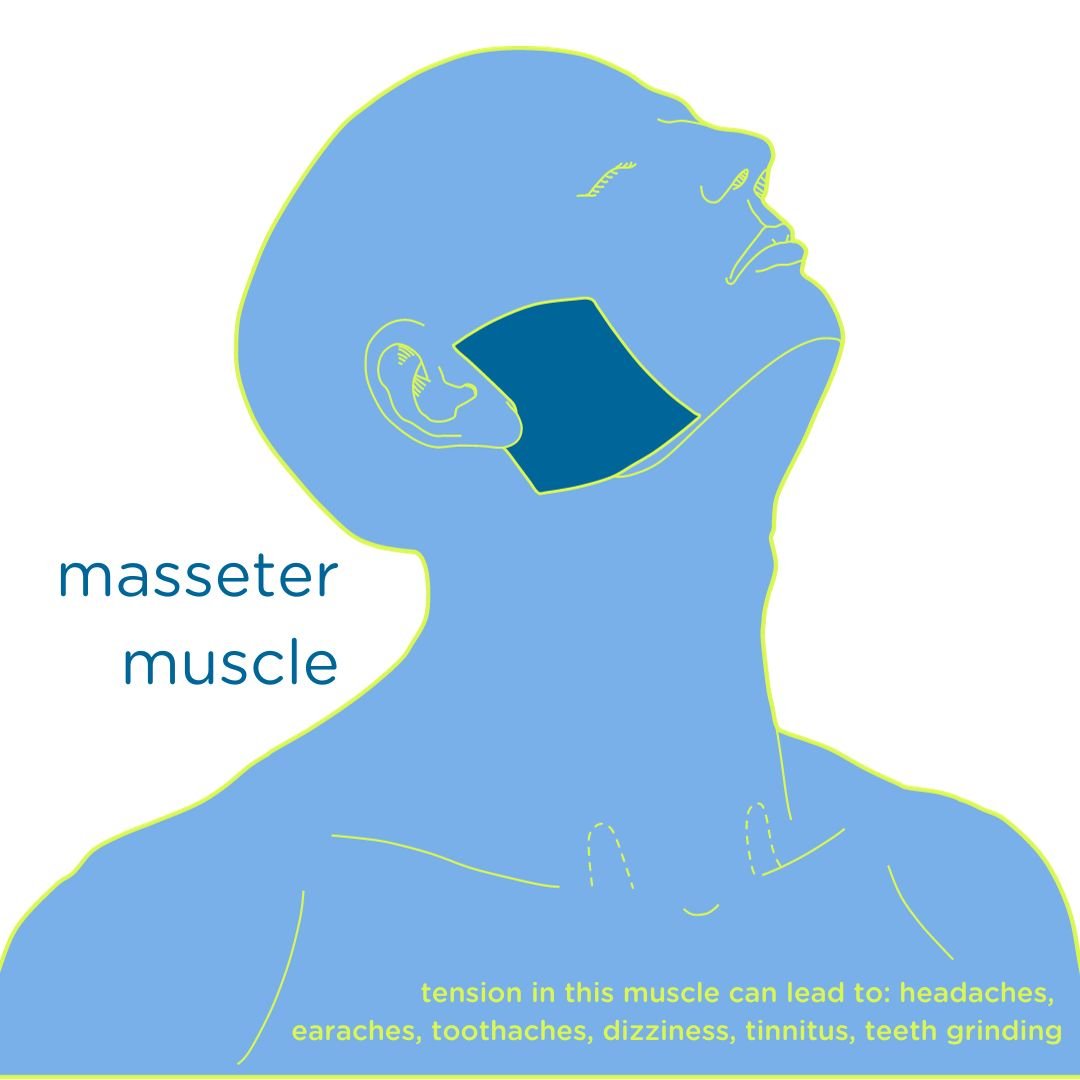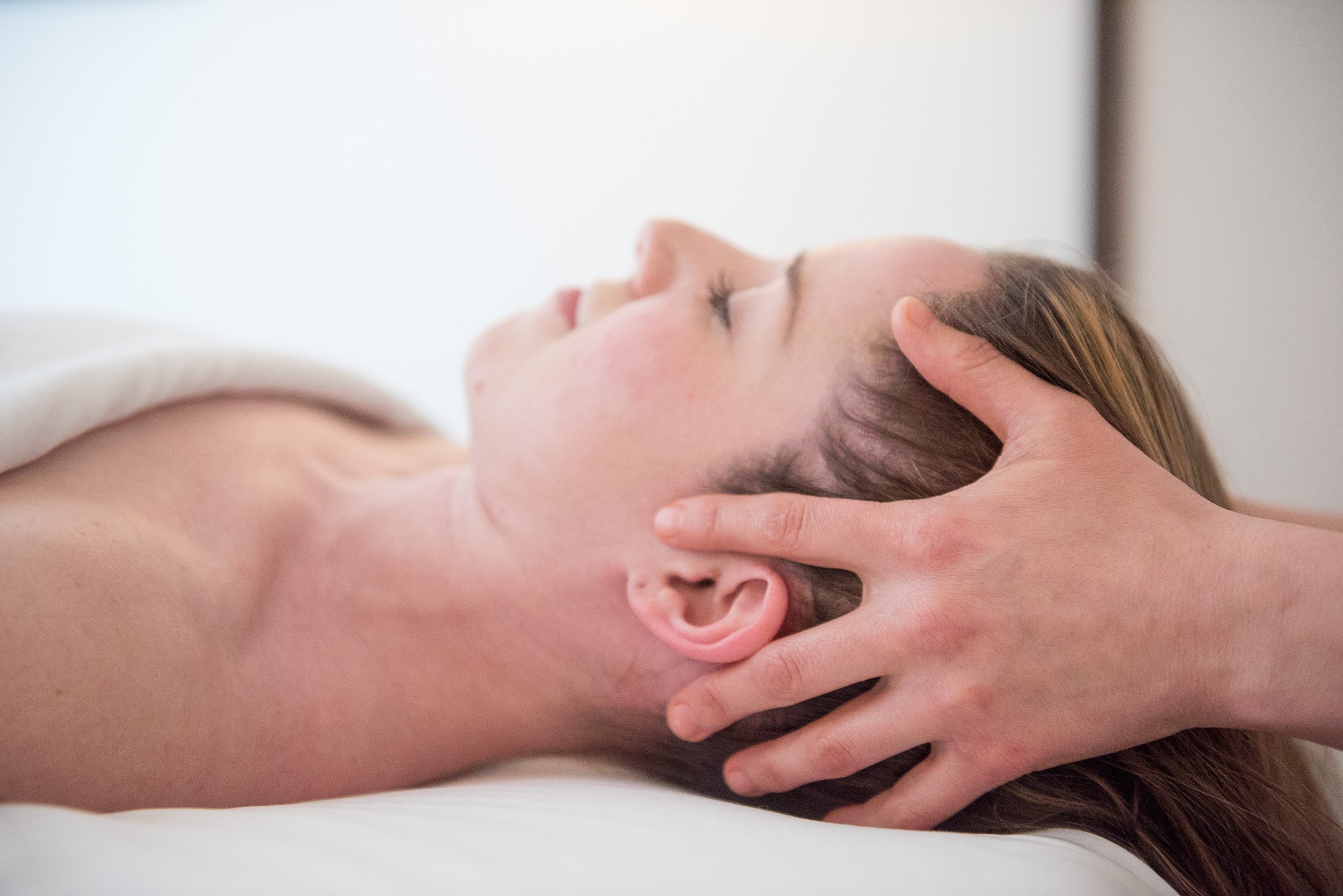Does your jaw pop, click or grind? Do you have frequent headaches, neck pain or stiffness? Tooth aches? Ringing or pressure in your ears? Do you play a wind instrument? History of anxiety or anxiety related disorders?
Temporomandibular joint (TMJ) disorders (aka joint disorders of the jaw) causing head, ear & neck pain have been plaguing humans for centuries. Hippocrates noted a relation between irregular & crowded teeth with headaches. His influence on jaw pain was so great, the Hippocratic Method is still used today in reducing jaw dislocations.[1] As the structures & soft tissues have evolved, so has our understanding of how to deal with associated pain patterns of the jaw.
Why has jaw structure evolved & changed globally?
Theories include the advent of soft foods. Essentially, softer foods = jaws don’t work as hard. To explain, we look to ‘Wolff’s Law’ that says our bones are thicker & stronger over time to resist forces upon them. With less action, the jaw structure weakens. The dietary shift towards softer foods has gently ‘softened’ our need for a pronounced, wider jaw.
Our narrowing facial features leave less space for sinuses and teeth. These evolutionary changes can contribute to an ecosystem of tightness from the neck up.
What can happen if jaw asymmetry goes unchecked?
One sided jaw imbalances can inflict issues on dental tissue & contribute to lock jaw or painful chewing & speaking.
When one side of your jaw tightens it can over stretch or irritate joint capsule. These factors cause a joint to lose its integrity, which can be very difficult to self-correct.
Clenching issues?
Mindfulness around tension holding patterns helps alleviate daytime clenching stress. When noticing active clenching, lightly rest the tongue to the roof of your mouth. Allow your low jaw to soften towards your chest. Breathe gently, holding this jaw position to naturally unwind ashiness or tightness felt. This exercise is taken from a yogic form of breath work.
Night time clenching should be managed with a well fitted bite plate from your dentist. Bite plates act to protect our teeth but they can also prevent our jaw from tightening to a close-packed position. Sustained clenching can refer tightness from the muscles of the jaw to the joints of the jaw. Overtime, this can lead to wear and tear on the joints, potentially translating into headaches, neck pain & general fatigue.
How can we help here at Sore Spots?
Our RMT approach may include deep tissue massage, fascial & point work to the muscles of the jaw, scalp & neck. Your RMT may also suggest internal jaw work. In this instance, your massage therapist will wear a latex glove to apply precise pressure work to the muscles that are best accessed from the inside aspect of the jaw.
Other techniques we may use to treat is isolated hot &/or cold hydrotherapy, cupping, breathwork & vocalization of various sound patterns that can be helpful exercises to relieve stress and achiness in the area. Massage therapy can help release jaw muscle tightness and joint compression by assisting with mechanical symmetry & to help improve the quality of movements.
Acupuncture is another in house offering that works wonders for jaw tension, headaches & neck pain. Other modalities we have suggested in the past for jaw pain include vocal coaching &/or speech therapy, hypnotherapy as well as physiotherapy. If jaw pain is on your mind, book an appointment to help heal your mind, spirit & sore spots too.
[1] Oliphant, Key, Dawson, Chung (2009). Bilateral temporomandibular joint dislocation following pulmonary function testing: A case report and review of closed reduction techniques. National Library of Medicine. DOI: 10.1136/bcr.10.2008.1130








